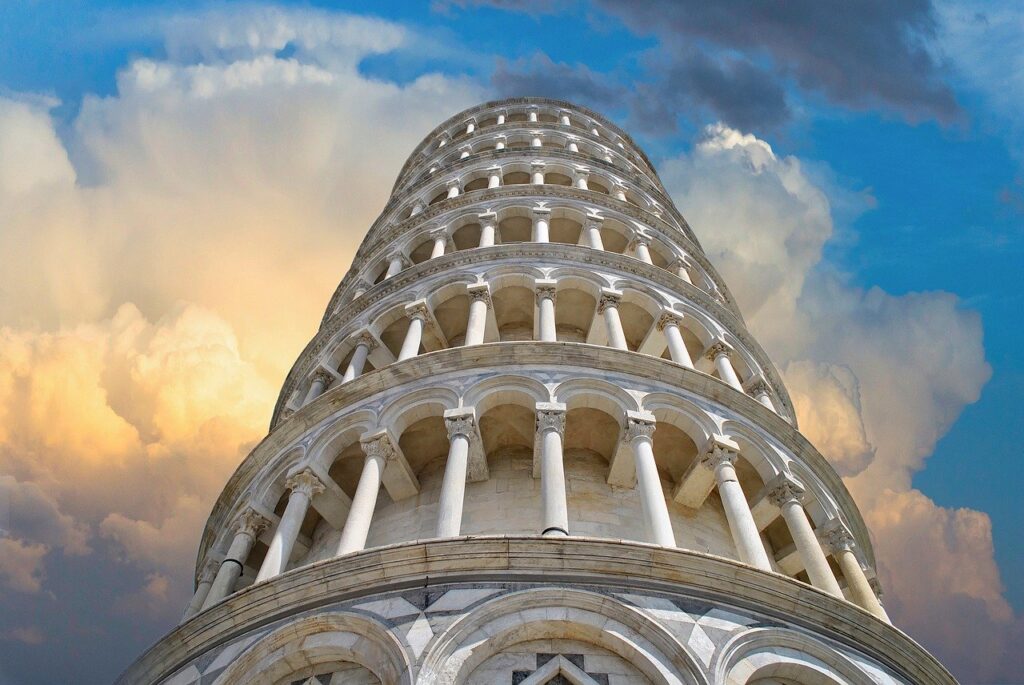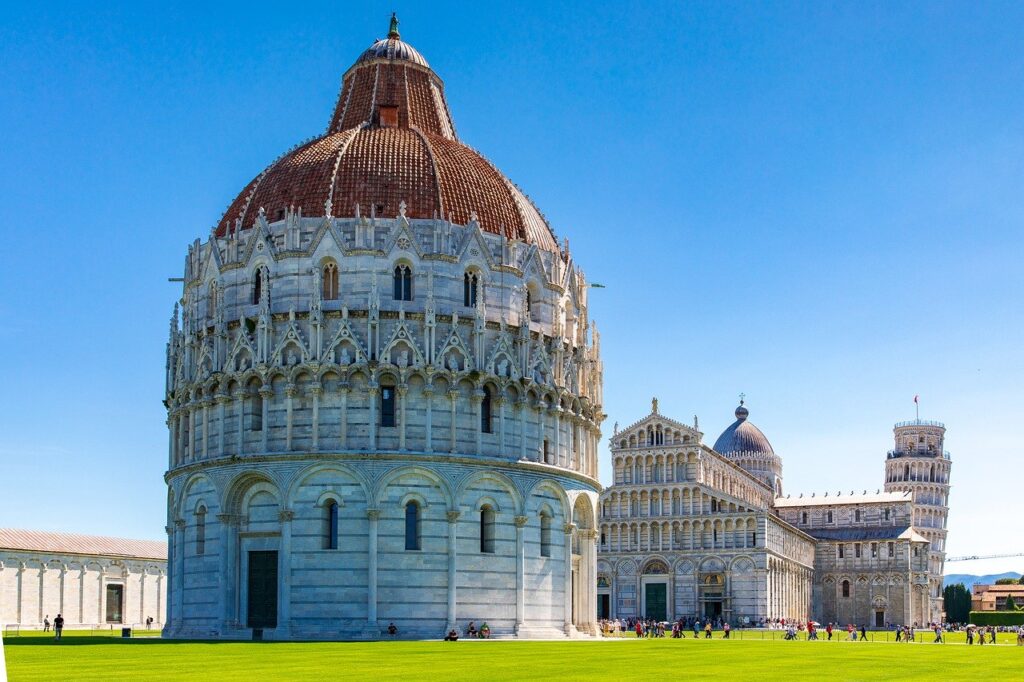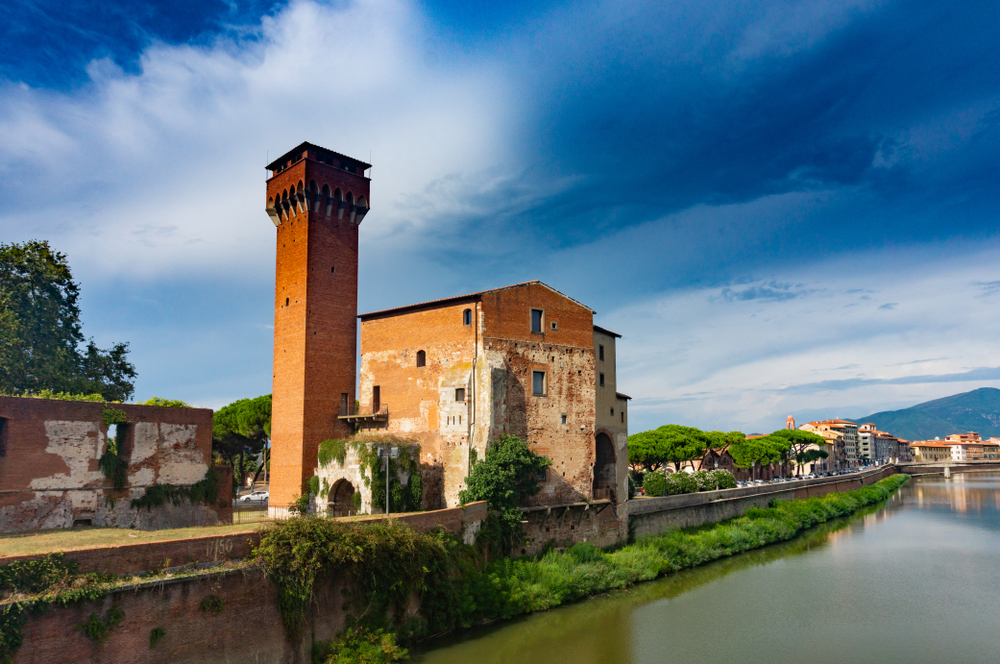48 hours in Pisa
Pisa is one of Italy’s most famous and most iconic cities. With around 5 million visitors each year, Pisa’s Leaning Tower is the second most visited tourist attraction in Italy, topped only by the Colosseum in Rome. But there is so much more to the city than just its tower. So how do we recommend you spend 48 hours in Pisa? Here’s our guide to Pisa so that you can cram as much as you can into your stay in this most wonderful city.
Day 1:
Morning:
I always think that any visit to Pisa should start with the city’s most famous attraction and its tallest building – its leaning tower – which despite its 4 degree lean, is set to stay put for hundreds of years thanks to a major restoration project at the beginning of the 21st century. The tower took nearly 200 years to complete and was built on unstable subsurface soils so that, even from the very start it tilted to the south, something that architects working on the building project tried to compensate for by angling the structure to the north resulting in the tower being slightly banana shaped!
These days, the tower is 56.67 metres tall on its highest side and 55.86 metres on its lowest. It has 2 staircases with 296 steps on the south side and 294 steps on the north side. These take you up to the seventh floor and bell chamber where there are seven bells (one for each note of the musical scale). Not that you’ll hear these bells tolling now though. The concern is that if the bells were rung, their movements would make the tower lean even more. It’s definitely worth all the effort to climb up all the stairs so that you can enjoy the incredible views over the Piazza dei Miracoli from the top along with the uninterrupted views over the rest of the city.

One word of advice: Make sure you book tickets to the Leaning Tower of Pisa in advance to avoid disappointment and to skip the queues. Only 45 people are allowed to make their way to the top every 15 minutes, so booking ahead is the only way to be sure of securing your slot. And, of course, if you prefer to blend in with the tourists rather than the locals, make sure you get that obligatory photo either propping up the tower or using the tower as the gelato in your ice cream cone!
Afternoon:
The Leaning Tower is by no means the only attraction in the Piazza dei Miracoli. In fact, this walled area encompasses approximately 22 acres north of the river Arno and also includes the Cathedral of Santa Maria Assunta, Baptistery and Campo Santo so it’s worth spending the afternoon exploring the rest of this part of Pisa.
Like its more famous tower, the Baptistery also leans (not surprisingly perhaps given it was built on the same ground as the tower) but only by 0.6 degrees. At 54.86 metres tall and with a diameter of 34.13 metres, it can claim to be the largest baptistery in Italy, and is a mix of Romanesque and Gothic styles. We think the exterior is absolutely stunning with an intricate series of arches, statues and other decorations, however you’ll find that this opulence continues inside, where there is a 13th century octagonal font along with a bronze sculpture of St John the Baptist and a pulpit by Nicola Pisano.

The grey and white marble Romanesque Duomo is the next building to discover within the Piazza dei Miracoli. Before going inside, take a minute to admire the door of Saint Rainerius decorated with 24 bronze relief sculptures. Inside, black, white and grey marble columns are topped with corinthian capitals whilst above you the ornate ceiling is decorated with gold leaf. Also of note is the large mosaic by Cimabue showing ‘Christ enthroned between the Virgin and St John’ and the pulpit constructed by Giovanni Pisano, the son of Nicola who designed the pulpit in the baptistery. But there is so much more to see here including the relics of Saint Rainerius, patron saint of Pisa and the tomb of Henry VII, Holy Roman Emperor. (Incidentally, if you are interested in the works of Pisano, then squeeze in a visit to the Museo dell’Opera del Duomo, which is less than a minute walk from the Duomo and houses some more original sculptures of father and son, Nicola and Giovanni Pisano as well as other cathedral artefacts.)
And finally, before you leave this large piazza, it’s worth taking a walk around the Campo Santo, Pisa’s cemetery. Also known as Camposanto Monumentale or Camposanto Vecchio, its name can be translated literally as ‘holy field’ due to the fact that it was supposedly built on a shipload of sacred soil from Golgotha, brought back to Pisa from the Third Crusade. Legend has it that a body buried here will rot in just 24 hours.
The outer walls of the building are made up of 43 arches with two doorways providing access to the inner lawn. The cemetery also has three chapels – the Chapel Ammannati, the Chapel Aulla and the Chapel Dal Pozzo. This is where you will find relics of eleven of the apostles, two fragments of the True Cross, a fragment of the Virgin Mary’s dress and a thorn from Christ’s Crown of Thorns. The Campo Santo also houses a collection of Roman sarcophagi.
Evening:
At the end of the day, head along the Via Santa Maria, a street lined with souvenir shops and pretty buildings painted yellow with green shutters. You’re spoilt for choice when it comes to restaurants in Pisa. There are so many excellent eateries. We’ve tried and tested a few and loved Osteria dei Cavalieri for its great meat dishes and more upscale setting, Pizzeria Martino for pizzas and Branzo for excellent seafood, but check out TripAdvisor for the latest reviews on where to eat out in Pisa.
Day 2:
Morning:
Whilst day 1 of your trip to Pisa will have seen you in the main tourist area, surrounded by holidaymakers having their photos snapped, day 2 of your trip to Pisa will give you the chance to explore a bit of ‘undiscovered’ Pisa, away from the other sightseers.
We recommend you start your morning climbing up the second of Pisa’s towers. Whilst the 15th century Gelph Tower is much less famous (and doesn’t lean), it is also much quieter and easily accessible to the public. The tower as you see it today was rebuilt following damage caused by bombing during WWII. It is situated in the Cittadella Vecchia around Pisa’s dockyards and a climb to the top will reward you with panoramic views over the city of Pisa.

Incidentally, if you fancy seeing another leaning tower in Pisa, there are others to see in the city too including one in the nearby Borgo Stretto. Here you’ll find the bell tower of the Church of Saint Nicola, an octagonal bell tower which definitely isn’t 100% vertical! There’s also another slightly leaning bell tower at the church of Saint Michele dei Scalzi on the Viale delle Piagge.
After this, why not enjoy an hour or two exploring the greener side of Pisa at the city’s Botanical Gardens. Just a few minutes walk away, the gardens were founded in the mid 16th century by Luca Ghini. The gardens were actually the first ever university botanical gardens anywhere in the world. They now cover an area of nearly 7.5 acres and are home to thousands of plant species from all over the world.
Afternoon:
After a light bite at L’Ostellino de’ I Porci Comodi which serves up the most delicious panini, make your way to Pisa’s second most important piazza – the Piazza del Cavalieri. In the past, this was both the political centre of Pisa and the headquarters of the Order of the Knights of St Stephen, a Roman Catholic Tuscan dynastic military order founded in 1561 by Cosimo I de’ Medici, the first Grand Duke of Tuscany. Today, the piazza is home to the Palazzo della Carovana, which in turn is home to the Scuola Normale Superiore di Pisa, an institution of higher education and part of Pisa university. Expect to find lots of students here. The palace itself is a beautiful building with an exterior decorated with sgraffiti representing allegorical figures and zodiacal signs.
If you still have an appetite for exploring Pisa, then finish the day at the Museo Nazionale di San Matteo on the banks of the River Arno, where you will find artworks dating back from the 12th to 15th centuries. There are more works by Giovanni and Nicolo Pisano here along with works by Simone Martini and Masaccio.
Other museums in Pisa worth exploring include the Museo delle Sinopie, the Museo Nazionale degli Strumenti per il Calcolo and the Museo di storia naturale dell’Università di Pisa which is the city’s natural history museum.
If you fancy exploring Pisa, then take a look at some of the apartments and villas in Tuscany available to rent from Bookings For You.


